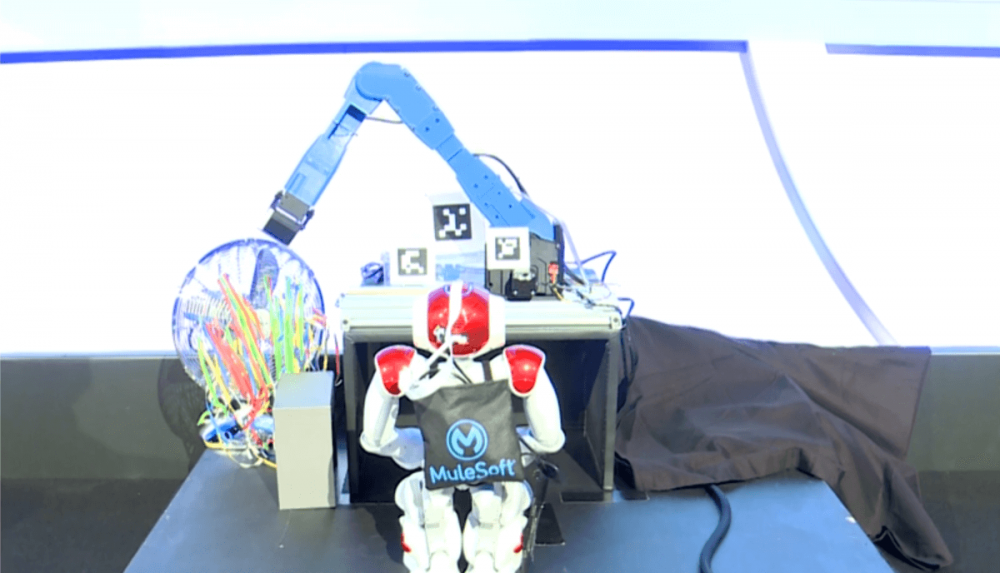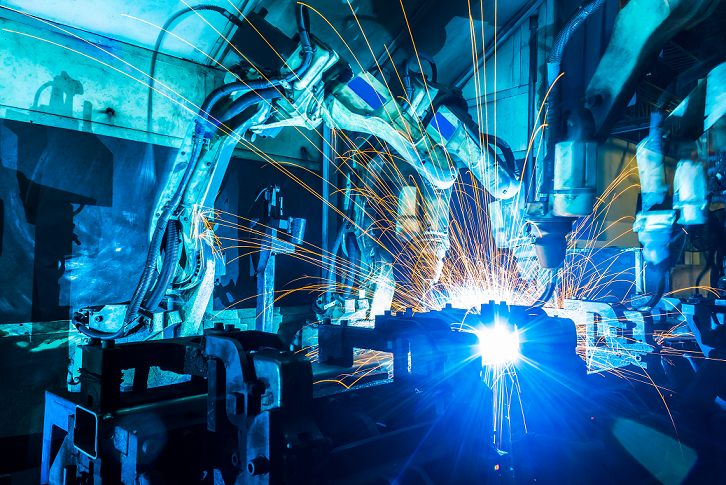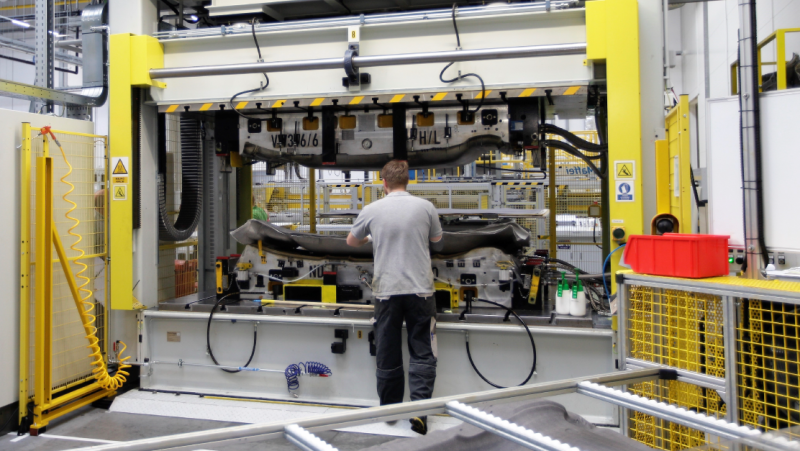The Digital Factory as MuleSoft sees it
- Digital Factory
- Article
How do you automate an entire factory? You need just three technologies: an API, the IoT and artificial intelligence, all communicating together. That’s how MuleSoft sees it, and last autumn they presented their vision of the digital factory at their summit in London.
MuleSoft is a company that develops software for interconnecting applications and technologies. They’ve developed the MuleSoft Anypoint Platform as a foundation for integrating enterprise systems. As their partner, we rode out to MuleSoft Summit 2017, where Uri Sarid, the company’s CTO, presented their vision of the digital factory. A factory can be fully automated just with help from an API set that interconnects the other technologies. In this case the APIs are organised into three layers.

A model of a digital factory. Source: MuleSoft.
The Industrial Internet of Things shown live
Through a model of a factory utilising the Industrial Internet of Things – IIoT, you can easily imagine how an automated workplace might function. In this case it’s made up of a robot, a robotic arm, cooling equipment (a fan) and sensors (for the fan status and the temperature and for blockage of the arm). These are integrated into the application network using standard system APIs (they provide access to back-end systems, or, in this case,devices). The IoT devices were interconnected with the Factory Floor Dashboard application using the user API (providing communication with user front-end applications). The Factory Floor Dashboard enables the visualisation of your workplace and real time insight.
Playing with API building blocks
So we have an application where you can see what the temperature of the robotic arm is, whether or not the fan is turned on, and whether the arm is capable of action, or is blocked instead. Standardised REST APIs from Open Connectivity Foundation (OCF) were used for this purpose. These enable the application of RAML (RESTful API Modelling Language) solutions for home and industrial use.
The next piece of the puzzle is the API that controls the cooling of the robotic arm. If the temperature sensor notes an increased temperature, the cooling device is started up automatically. This is an automatic process controlled by software logic (if A happens, do B). We thus make a distinction here for what are called process APIs. The integration model then looks as in the diagram shown. The individual APIs form a “plug-and-play” application network.
Automatic event reports and remote repairs
Another part of the digital-factory functionality presented is the ability to automatically generate a report when an unexpected event occurs and arrange a response by a technician. This is handled by another process API. A special application notifies of the malfunction (blocking by a box) and arranges for a service technician to be sent out. But he may not even have to be sent out at all. During their demonstration, MuleSoft used a robot with an installed camera. Interconnection with a virtual reality headset enables anyone anywhere in the world to see exactly what’s there in front of the robot in the factory. Also, thanks to augmented reality and integration – via APIs, naturally – with the application network, they can also see the sensors’ statuses. Thus instead of just the temperature sensor itself, they see a temperature reading etc. That gives them an edge over even a technician responding on-site. A remote technician who’s reflected in a robot can perform service responses faster and more safely.
In the video you can also see integration with the Amazon Recognition service. This is useful for example for controlling a plant’s personnel flow – it only provides access for the people who actually work there. It can similarly be used in co-operation with machines – the system has access to a image of the operator who has been trained for the given machine, and will not let anyone else manipulate the machine etc.
The benefits of the Industrial Internet of Things
MuleSoft demonstrated three fundamental benefits in this example of a fully automated factory. The first lies in automated logical actions that can be triggered in a plant without human intervention. We showed this through the example of the cooling and the status check for the robotic arm’s operations. No manpower is needed for checking the current state of the line. Another major benefit is the option for remote service responses. These are very useful when there’s a limited budget for technicians, or operations are in a distant place, or for example the technician happens to be at a different plant of the company and won’t be able to relocate to the plant with the malfunction sufficiently quickly. Thus you can resolve simple defects remotely. And as technology advances, the options here will keep expanding.
And the benefit for developers? There’s no need to reinvent a way to interconnect technologies with each other and with applications and their functionalities. Standardised APIs make it possible to assemble them into a complex whole in the way that suits a given operation. API recycling saves significant time that your developers would otherwise have to spend writing entirely new code.
API (Application Programming Interface). This is a set of definitions, protocols and tools that describe how to communicate with a given application. You don’t have to go far to find a real-world example. APIs are used all the time for connecting two applications – for example when paying for web purchases, where your bank connects to the e-shop and instantly sends information on whether or not you have enough money on your account, and then sends the money to the e-shop, which meanwhile has instant feedback on whether or not your order was paid successfully.
MuleSoft, Inc., was founded in 2006 in San Francisco. They have developed MuleSoft Anypoint Platform, a system for integrating applications, data and devices. Since 2016, Aimtec has been a MuleSoft partner for the area of production and logistics. www.mulesoft.com
Open Connectivity Foundation (OFC) focuses on providing safe integration and interoperability of technologies for consumers, enterprises and industry by providing standard communication platforms, interface specifications, implementation with open-source code and a certification program enabling communication with a device no matter what its form, operating system, service provider, technology or environment. Interconnectivity is a fundamental element of the IoT. www.openconnectivity.org
Share article
Top stories from logistics, production and IT.
Subscribe to Aimtec Insights
By registering, you agree to the processing of your personal data by Aimtec as described in the Privacy policy.
Get top stories and articles
from Logistics, Production and IT.
Subscribe to Aimtec Insights
By registering, you agree to the processing of your personal data by Aimtec as described in the Privacy policy.







